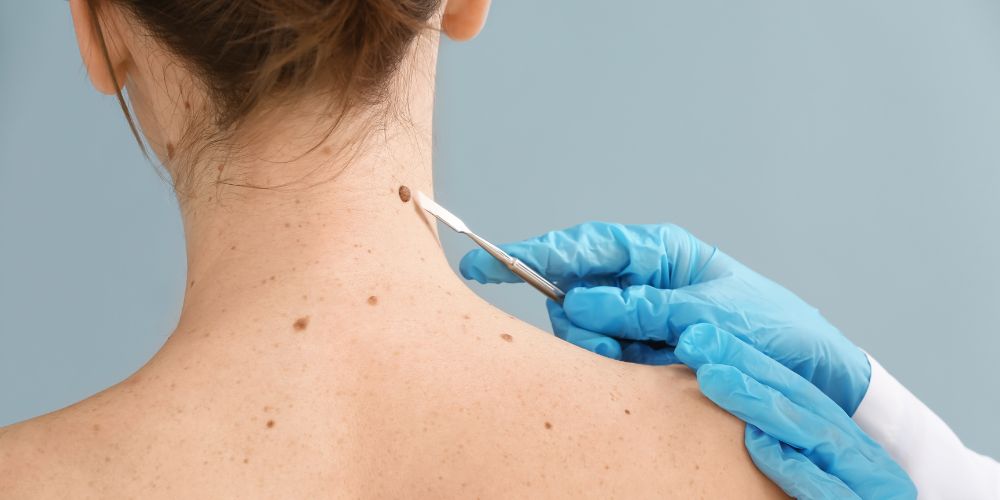Moles and Skin Tags Removal
Moles and skin tags are common skin growths that many people experience at some point in their lives. While they are usually harmless, they can sometimes cause discomfort or self-consciousness, leading individuals to consider removal options. We at Zafeerah Skin Clinic have specialists for moles and skin tag removal. We use the most sophisticated techniques and equipment for removing moles and skin tags.
What Are Moles and Skin Tags?
Moles are groups of pigmented cells that are seen as small, dark spots on the skin. They may vary in size, shape, and color, ranging from tan to brown to black. Moles are typically harmless but should be monitored for changes in size, shape, or color, as these could indicate skin cancer.
Skin tags, on the other hand, are small, soft growths that protrude from the skin. They are often flesh-colored or slightly darker and are connected to the skin by a thin stalk. Skin tags are benign and commonly occur in areas where the skin rubs against itself, such as the neck, underarms, or groin.
How the Removal Techniques Work
Several techniques are available for removing moles and skin tags, including:
- Excision: This involves cutting the mole or skin tag off with a scalpel. Before the procedure, the area is typically numbed with a local anesthetic. Stitches may be required for larger moles or skin tags.
- Cauterization: In this method, the mole or skin tag is burned off using a special tool that generates heat. Cauterization helps seal the wound, reducing the risk of bleeding and infection.
- Cryotherapy: Cryotherapy involves freezing the mole or skin tag with liquid nitrogen. This causes the growth to blister and eventually fall off. Multiple sessions may be needed for complete removal.
- Laser Therapy: Laser treatment uses focused light to target and destroy the cells in the mole or skin tag. It is a precise method that may require multiple sessions for optimal results.
Advantages of the Removal Techniques
The removal of moles and skin tags offers several advantages, including:
- Improved Appearance: Removing unsightly moles and skin tags can boost self-confidence and improve overall appearance, especially if the growths are in visible or sensitive areas.
- Relief from Discomfort: Skin tags that rub against clothing or jewellery can cause irritation and discomfort. Removing them can alleviate these issues.
- Early Detection of Abnormalities: Regularly monitoring moles for changes and having suspicious moles evaluated by a dermatologist during the removal process can aid in the early detection of skin cancer.
- Quick and Minimally Invasive: Many removal techniques are quick, outpatient procedures that require minimal recovery time, allowing patients to resume their daily activities shortly after treatment.
FAQs about Moles and Skin Tag Remova l
The level of discomfort during mole removal depends on the technique used and individual pain tolerance. Local anesthesia is often administered to minimize pain.
While moles that are completely removed typically do not grow back, new moles may appear over time due to sun exposure and genetics.
Risks of mole and skin tag removal include infection, scarring, and changes in skin pigmentation. It's crucial to follow post-treatment care instructions and seek professional guidance.
While some home remedies claim to remove skin tags, it's safer to have them removed by a healthcare professional to avoid complications.
Conclusion
Mole and skin tag removal techniques offer safe and effective options for addressing these common skin growths. Consulting with our dermatologist can help determine the most suitable removal method based on individual needs and preferences. Whether for cosmetic reasons or to alleviate discomfort, removing moles and skin tags can enhance both physical and emotional well-being.


